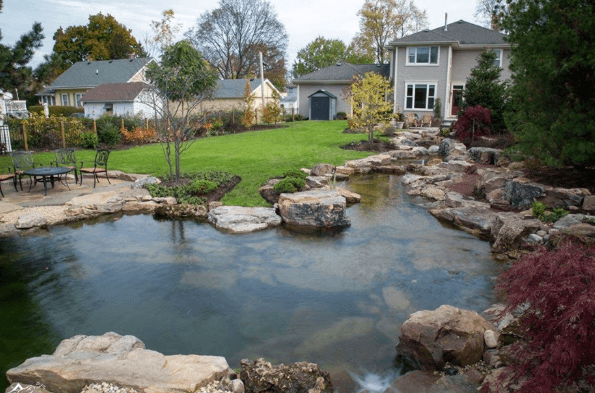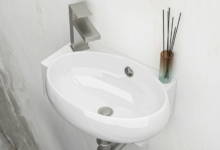Your Guide to Picking Healthy Pond Fish from a Swimming Pond Shop

Transforming your backyard into a serene aquatic retreat involves more than just installing a pond—it’s about choosing the right fish that bring color, movement, and life to the water. Fish add personality, create balance within the ecosystem, and offer a soothing presence that enhances the overall experience of outdoor living. But selecting the right species isn’t just a matter of aesthetics; it requires a thoughtful understanding of pond depth, water quality, compatibility between breeds, and seasonal needs. Choosing unsuitable fish can lead to imbalanced water conditions, aggressive behavior, or even the loss of aquatic life. Whether you’re new to the hobby or a seasoned pond owner, picking the right fish is essential for harmony and health in your water garden. A reliable Swimming Pond Shop can help you make informed choices by offering expert advice, high-quality equipment, and a diverse selection of fish tailored to your pond’s specific conditions.
Why the Right Fish Make All the Difference
Fish aren’t just decorative; they’re an integral part of your pond’s ecosystem. The right selection improves water clarity, balances algae levels, and creates an active, visually captivating environment. But introducing fish into your pond requires consideration of factors like water depth, filtration systems, and compatibility among species. A visit to a reputable swimming pond shop will guide you in choosing species suited to your pond’s design and maintenance level.
Crowd-Pleasers and Eco-Helpers: A Look at Popular Pond Fish
Not all pond fish are created equal. Some are vivid swimmers that steal the show, while others work quietly behind the scenes to maintain a healthy environment. Let’s explore some of the most popular options for your garden pond.
Koi: The Living Masterpieces
Koi are often considered the jewels of any ornamental pond. These graceful fish come in a range of striking patterns and hues, from fiery orange to deep black and pearl white. Their beauty, however, comes with a set of demands.
- Depth requirements: 60 inches or more for wintering
- Tank size: A single koi needs roughly 1,000 liters of water
- Filtration needs: Strong systems to handle the waste they produce
- Care level: High, but rewarding—many koi live over 30 years!
Koi thrive best in spacious, purpose-built environments. Look for koi-specific supplies and nutrition at your swimming pond shop.
Shubunkins: Flashy Yet Friendly
Shubunkins resemble goldfish but with vibrant calico coloring and a more streamlined body. These fish are lively, sociable, and easier to care for than koi.
- Depth preferences: Minimum 6 inches for spawning, 28+ inches for cold months
- Best kept in: Groups of 5 or more
- Ideal for: Smaller ponds with plenty of plant life
They coexist well with other peaceful species and add instant energy to a garden pond.
Golden Tench: Nature’s Little Helpers
If you’re seeking low-key fish that improve pond health, the golden tench is a great pick. Sometimes called “doctor fish,” these bottom-dwellers consume detritus and leftover food, reducing organic waste.
- Social needs: Thrive in groups of 5+
- Depth: Minimum 28 inches
- Role: Cleaning crew for koi or heavily stocked ponds
These fish might not be flashy, but they quietly support a cleaner, more balanced aquatic ecosystem.
Rosettes: Energetic and Eye-Catching
Rosettes are a fantastic addition to any pond, especially if you’re focused on oxygen flow and water clarity. With their vivid red fins and schooling nature, they’re a lively sight.
- Water requirements: Clean, well-oxygenated conditions
- Group size: 10–15 fish for social comfort
- Companion plants: Hornwort or elodea for oxygen boosting
These fish pair well with an advanced filter system available at a reliable swimming pond shop.
Goldfish: A Pond Starter’s Best Friend
Often underestimated, goldfish are a classic choice for beginners. They’re hardy, adaptable, and bring golden warmth to any pond setting.
- Depth: 40 inches or more for overwintering
- Care level: Low to moderate
- Caution: High reproductive rate may lead to overcrowding
Goldfish work well in mixed-species ponds and are readily available at most aquatic retailers.
Fish Species You Should Avoid in Garden Ponds
Some fish might seem like a good idea at first glance but end up disrupting the pond’s balance or harming other inhabitants.
Avoid the following:
- Grass Carp – They aggressively consume aquatic plants, stripping your pond bare.
- Sturgeon or Sterlets – These bottom-feeders need cold, deep, and highly oxygenated water, making them ill-suited for standard garden ponds.
- Large Catfish – Known to be aggressive and predatory, they may bully or eat smaller fish.
- Wildlife Ponds – Avoid introducing koi or goldfish if you’re trying to attract frogs, newts, and dragonflies.
Consult a swimming pond shop before adding any unfamiliar species.
Creating the Ideal Environment for Your Fish
Just as important as the fish themselves is the habitat you create for them. Start with a well-designed pond layout, then build in the essentials to maintain harmony.
Filtration
Effective filtration keeps the water clear and reduces the harmful buildup of ammonia and nitrates. High-quality options, such as drum filters or the Oase Screenmatic series, handle large bioloads with ease.
Oxygenation
Fish, especially active species like koi and rosettes, need plenty of dissolved oxygen. This can be achieved with waterfalls, air stones, or oxygenating aquatic plants.
Monitoring and Balance
- Test water regularly for pH, ammonia, nitrites, and oxygen
- Don’t overfeed—uneaten food leads to algae growth
- Avoid overstocking—a good rule is 1 inch of fish per 10 gallons of water
Most Swimming Pond Shop offer starter kits with everything you need to test and maintain optimal water conditions.
Enriching Your Pond Beyond Fish
Fish may be the stars, but the supporting cast matters too. Consider adding:
- Floating plants like water lettuce for shade and cover
- Marginal plants for visual appeal and natural filtration
- Lighting to highlight your fish at night
- Natural stone edges for both beauty and wildlife access
With these enhancements, your water garden becomes a full sensory experience.
Clearing Up Confusion
Can I mix different types of pond fish?
Yes, but always choose compatible species. Avoid mixing aggressive fish with peaceful ones and ensure they all thrive in the same water conditions.
How often should I feed my pond fish?
Once or twice daily is enough. Feed what they can consume in 2–3 minutes to avoid waste buildup.
Do I need a heater for my pond in winter?
In colder regions, deeper ponds (over 3 feet) help fish hibernate safely. A pond heater or de-icer can maintain a breathing hole in the ice.
Is it safe to keep koi in small ponds?
No. Koi require significant depth and volume. Overcrowding them leads to stress, disease, and poor water quality.
How can I prevent algae growth?
Limit sunlight exposure with floating plants, don’t overfeed, and use UV clarifiers or algae treatments as recommended by your swimming pond shop.
Final Thoughts
Selecting the perfect pond fish is as much about creating an ecosystem as it is about aesthetics. Whether you’re drawn to the majestic koi, the charming goldfish, or the helpful tench, making informed choices ensures your pond remains a healthy, vibrant sanctuary.
The journey begins at your trusted swimming pond shop—where expert staff can match your pond’s unique setup with fish that flourish. With proper planning, balanced care, and a bit of aquatic flair, your garden pond will not only come alive it will thrive for years to come.

